Build Your Dream: Essential Elements for DIY Camping Trailer Success
Ready to turn your DIY camping trailer dream into reality? Master these 7 non-negotiable elements first. But most beginners waste $1,000+ on a mistake hidden in plain sight. The real foundation isn’t the axle or the frame—it’s your electrical system. Here’s how to hack it like a pro.
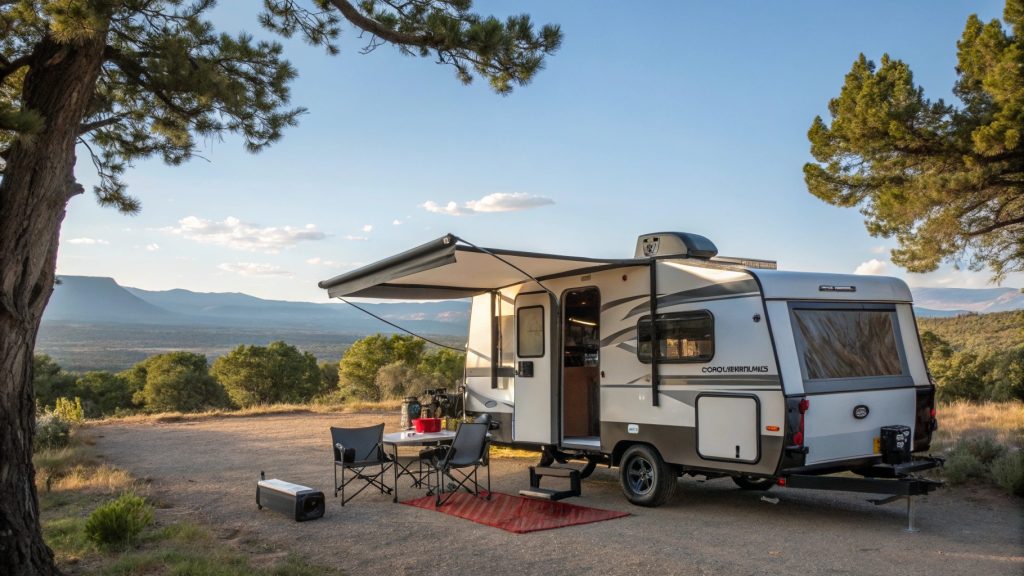
Can you Imagine waking up to the gentle rustle of leaves, the aroma of fresh coffee brewing, and the sun casting a golden hue on a serene landscape just outside your window. This isn’t a scene from a travel magazine; it’s the reality of your very own DIY camping trailer, crafted with your own hands, whether built from scratch, a refurbishment project or transitioned trailer from from a different purpose. But before you star looking at the world of wheels, metal and wood, understanding the essential elements that make a camping trailer not just functional but a true home on the road is crucial.
From design principles that maximize space to savvy storage solutions that turn chaos into order, each component plays a vital role in transforming your vision into a reliable adventure companion. So let’s start to look at the must-have features and insider tips that will set you on the path to camping bliss!
Choosing the Right Base: Trailer Foundations
When embarking on your DIY camping trailer project, the foundation you choose plays a crucial role in its overall success. First and foremost, the weight capacity of the trailer foundation must be considered; this ensures it can adequately support both the trailer structure and its contents.
Additionally, evaluating the materials used in the trailer frame, such as steel or aluminum, is essential for ensuring durability and resistance to rust and corrosion. Size and dimensions should not be overlooked either, as they need to align perfectly with your intended design and layout. Lastly, researching the axle configuration and suspension system is vital for achieving optimal towing stability and smooth handling, especially when navigating various terrains.
Types of Trailers: Pros and Cons
When considering the various types of trailers for your DIY camping trailer project, each option presents its unique set of advantages and challenges. Travel trailers, for instance, provide the comfort of home-like amenities, making them appealing, yet they can pose towing challenges for those with less experience. On the other hand, pop-up campers are lightweight and easy to store, ideal for quick getaways, but they often come with limitations in space and insulation.
Fifth-wheel trailers shine with their spacious living areas and excellent towing stability, although they necessitate a compatible truck for proper hitching. Lastly, teardrop trailers cater to solo travelers with their compact and fuel-efficient design, but they might not offer the full suite of features that a larger family would need for extended trips.
Weight Capacity Considerations
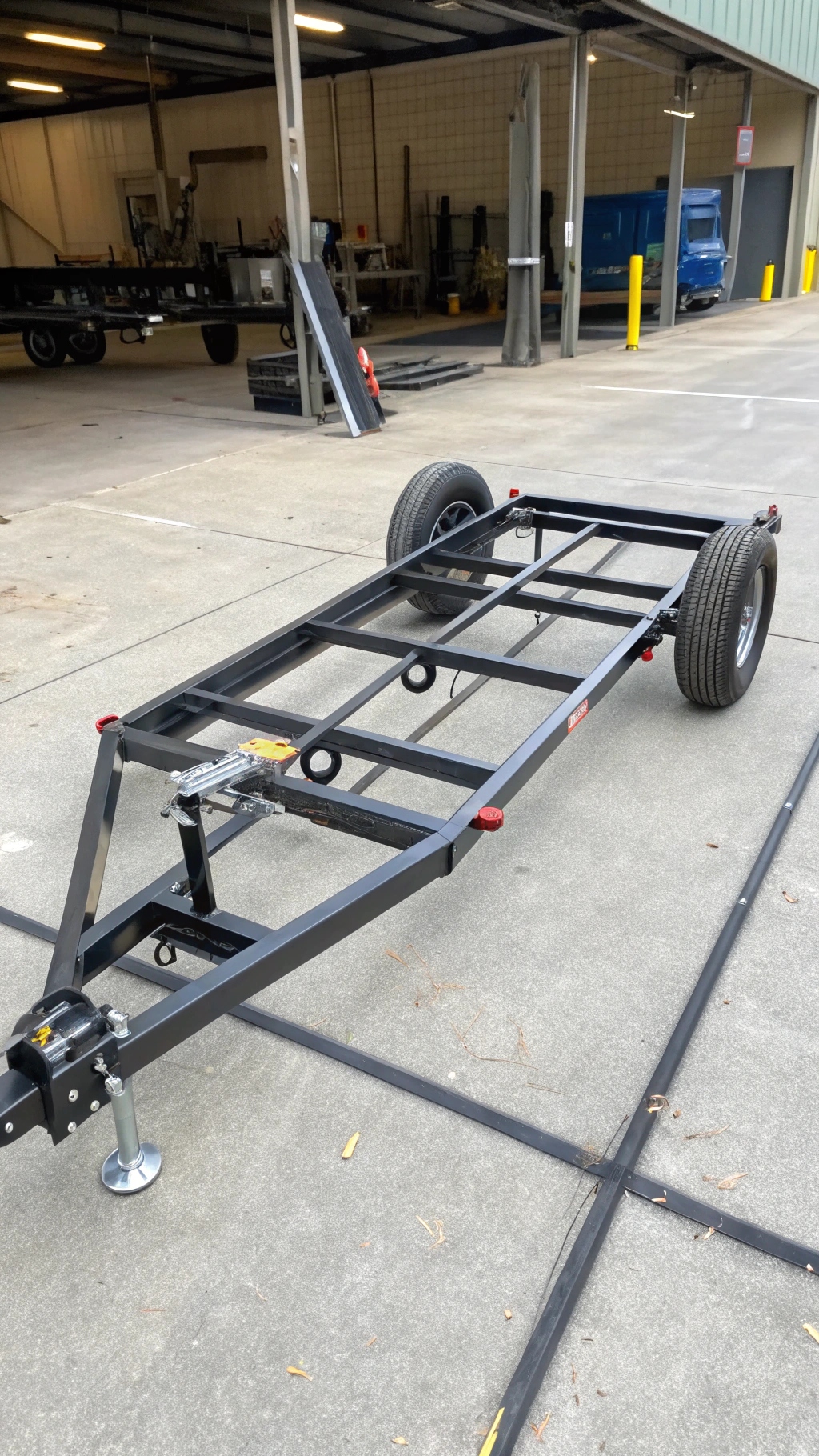
Understanding the weight capacity of your camping trailer is crucial for ensuring safe towing and handling across diverse terrains. To avoid exceeding the manufacturer’s recommended limits, it’s important to consider the total weight of the trailer, which includes gear, supplies, and occupants.
If we incorporate lightweight materials into the design and employing efficient packing strategies, you can maximize your trailer’s weight capacity while still enjoying comfort during your adventures. Additionally, regularly checking and maintaining the trailer’s weight distribution is essential; this practice helps prevent swaying and instability while driving, contributing to a smoother and safer travel experience.
Designing Your Space: Layout and Functionality
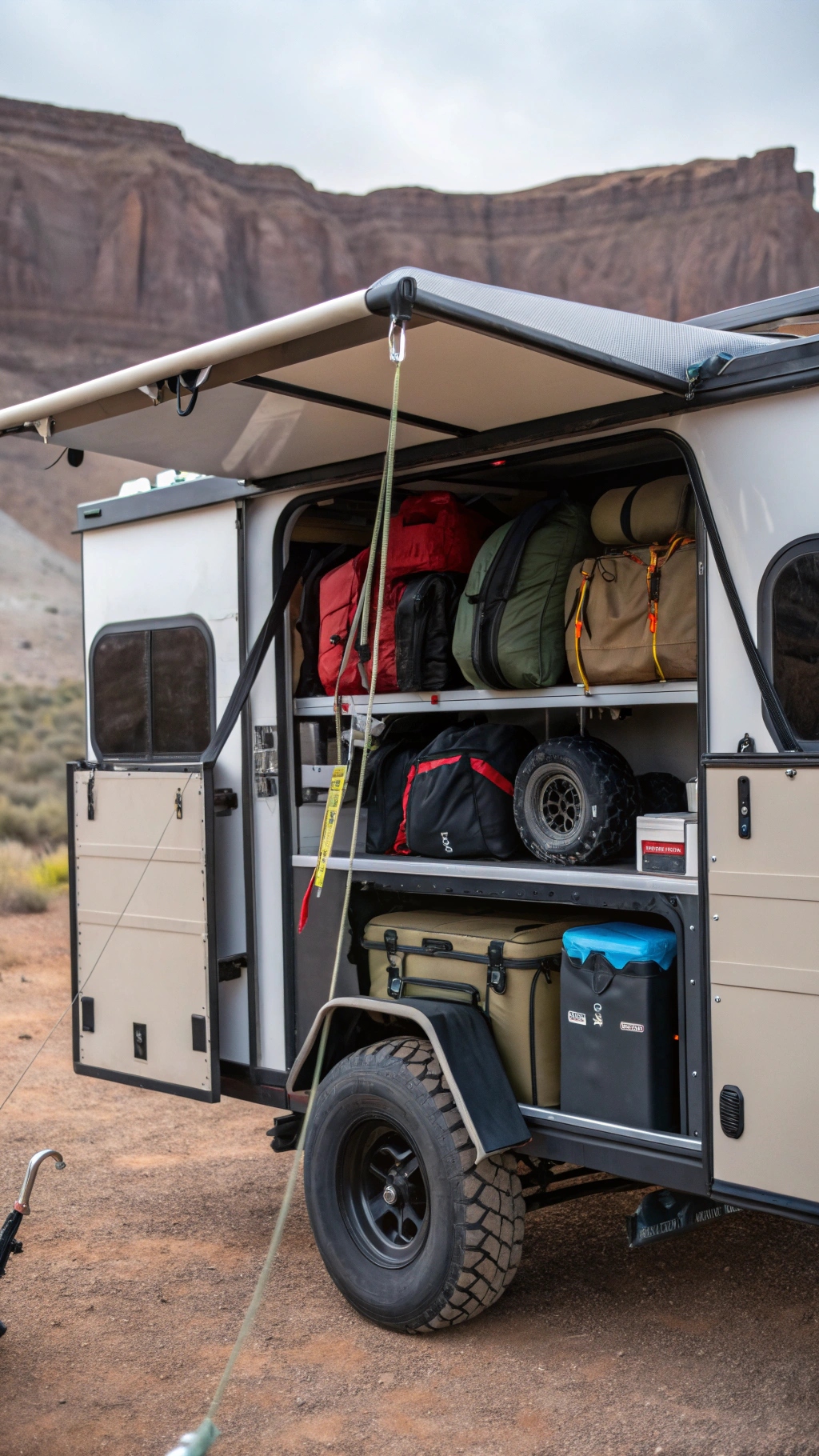
Designing the interior of your camping trailer requires careful consideration of space and functionality. First, the flow of movement should be intuitive, allowing easy access to essential areas like the kitchen and sleeping quarters.
Multifunctional furniture can play a pivotal role; incorporating items such as a foldable table or convertible seating ensures that every inch is utilized effectively. Vertical storage solutions, including shelves and hooks, help keep the floor area clear, promoting a clutter-free environment. Additionally, planning for adequate natural light and ventilation by strategically positioning windows and vents enhances comfort and ambiance, making your trailer a welcoming retreat amidst nature.
Maximizing Limited Space with Smart Layouts
Maximizing limited space in your camping trailer begins with smart furniture choices. Utilizing multi-functional pieces, such as collapsible tables and fold-out beds, can significantly save space while providing essential features. Vertical storage solutions, like wall-mounted shelves and hooks, further enhance organization, keeping the floor area clear and clutter-free.
An open floor plan with thoughtfully placed furniture creates a sense of spaciousness and facilitates easy movement throughout the trailer. Additionally, considering modular layouts allows for reconfiguration based on the specific needs of each camping trip, ensuring that comfort and utility are never compromised.
Essential Features for Comfort and Utility

Creating a welcoming atmosphere within your DIY camping trailer hinges on incorporating essential features that prioritize comfort and utility. A comfortable sleeping area, complete with high-quality mattresses and bedding, is vital for ensuring restful nights after long days of adventure. Ample storage solutions, such as cabinets and under-bed compartments, keep your gear organized and easily accessible, minimizing clutter.
Additionally, an efficient kitchen setup, equipped with a stove, sink, and refrigerator, streamlines meal preparation, allowing you to enjoy home-cooked meals on the go. Finally, integrating utilities like a water system, electricity hookups, and proper ventilation maximizes convenience, transforming your trailer into a cozy haven amidst the great outdoors.
Materials Matter: Selecting the Right Components
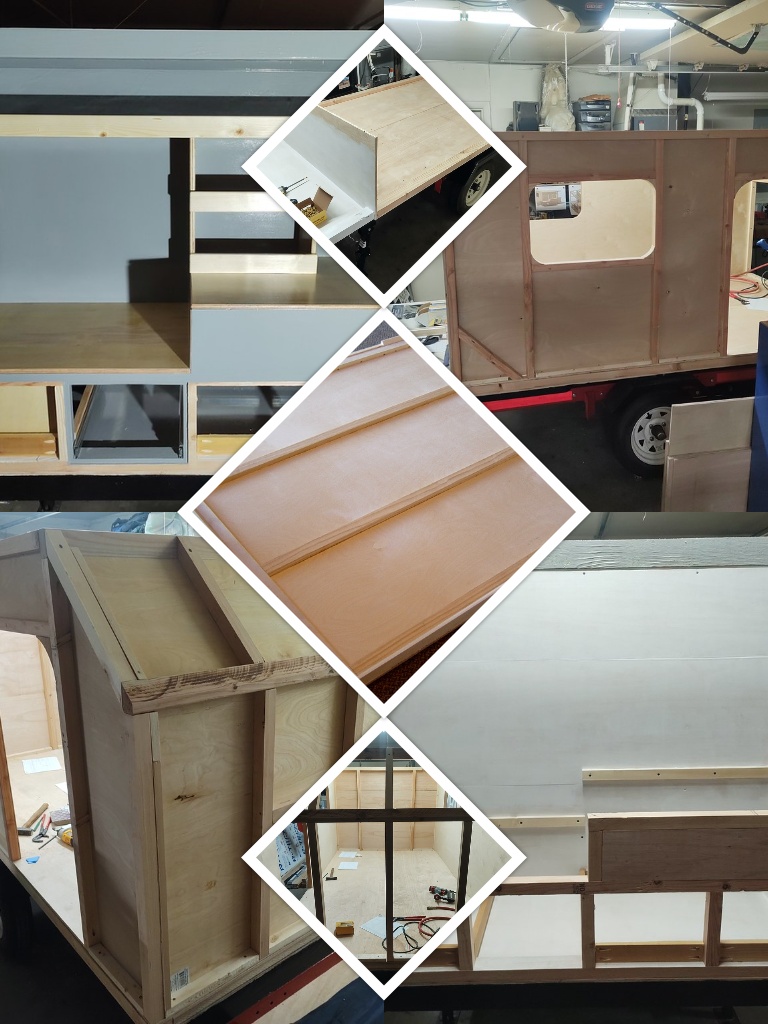
Selecting the right materials can greatly impact the overall performance and lifespan of your camping trailer. Opting for lightweight yet durable materials, such as aluminum or fiberglass, enhances portability, making towing a breeze while ensuring your trailer stands the test of time.
Weather-resistant fabrics for the awning and interior are essential, as they protect against moisture and extend the life of your furnishings. Moreover, incorporating insulating materials not only helps regulate temperature within the trailer but also boosts the energy efficiency of appliances. Lastly, investing in high-quality, rust-resistant hardware and fixtures guarantees that all components function reliably and endure the elements during your outdoor adventures.
Durability vs. Weight: Finding the Balance
Building a DIY camping trailer necessitates a careful selection of materials that strike an optimal balance between durability and weight. Reinforced aluminum and composite materials emerge as excellent choices, providing the strength needed for rugged adventures while maintaining a manageable overall weight for easy transport.
When determining the appropriate design, consider the intended use; a heavier frame might be essential for off-road capabilities, whereas a lighter construction is more suitable for fuel efficiency on paved roads. By utilizing advanced engineering techniques—such as optimizing load distribution and eliminating unnecessary components—you can create a camping trailer that is both resilient and lightweight, ensuring it withstands the rigors of outdoor exploration while remaining easy to tow.
Sustainable Materials for Eco-Friendly Builds
When constructing your DIY camping trailer, embracing sustainable materials can significantly reduce your environmental impact. Reclaimed wood sourced from old furniture or construction sites not only minimizes waste but also adds unique character to your build. Incorporating bamboo, a fast-growing and renewable resource, serves as an excellent choice for structural elements and finishes.
Furthermore, eco-friendly insulation materials like sheep’s wool or recycled denim enhance energy efficiency while avoiding harmful chemicals. Lastly, opting for low-VOC paints and finishes improves indoor air quality, creating a healthier living environment for your adventures in the great outdoors. By choosing these sustainable options, you can build a trailer that aligns with eco-conscious values while enjoying the beauty of nature.
Electrical Systems Simplified: Powering Your Adventure
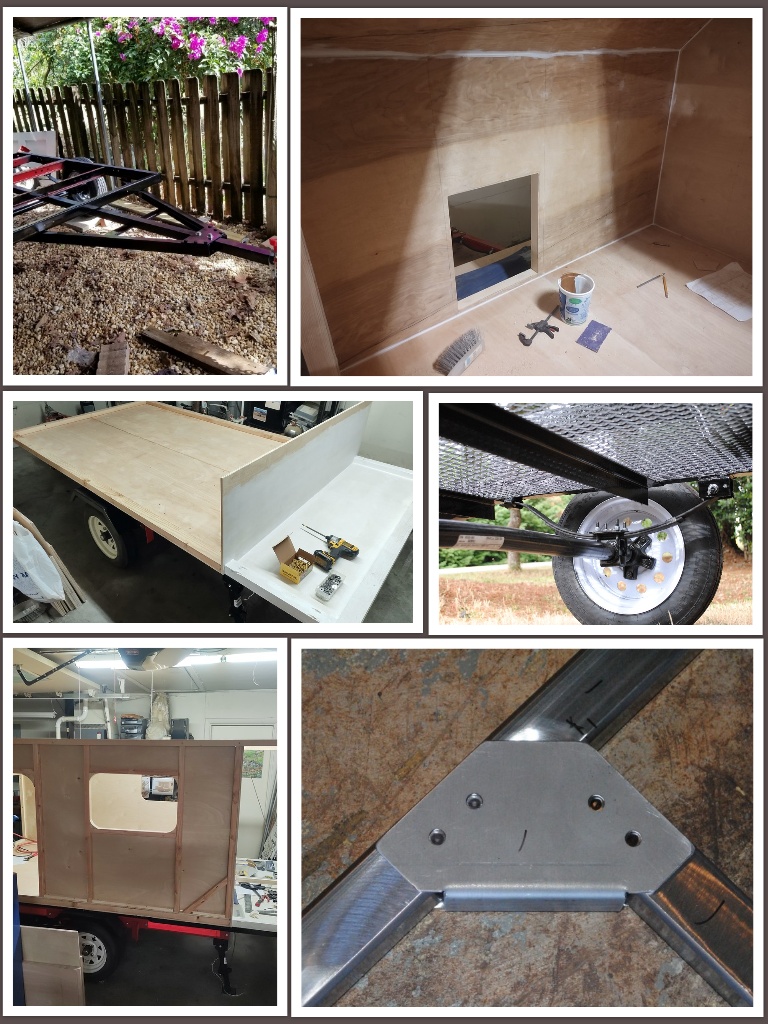
Understanding the basics of a camper’s electrical system can greatly simplify your DIY trailer projects and enhance your overall camping experience. Choosing the right battery type, whether deep cycle or lithium, is crucial for efficiently powering your trailer’s lights and appliances, ensuring you remain comfortable during your adventures.
In addition, incorporating solar panels into your design not only provides a sustainable energy source but also reduces reliance on traditional power options, making your trailer eco-friendly. Finally, learning to install a simple wiring system for lights, outlets, and charging ports can significantly improve the functionality of your camping trailer, allowing you to enjoy modern conveniences while immersed in nature.
Basic Wiring Concepts for Beginners
Understanding the difference between AC and DC current is essential for safe and effective wiring in your DIY camping trailer. Familiarizing yourself with electrical wiring color codes will help you identify the purpose of each wire easily, reducing the likelihood of mistakes during installation. Moreover, learning to read and interpret electrical schematics can significantly enhance your ability to plan and execute wiring projects with confidence.
Above all, prioritizing safety is paramount; always use proper fuses and circuit breakers, and ensure that all connections are secure to prevent shorts and electrical fires. By taking these precautions, you can create a reliable electrical system that enhances your camping experience.
Solar Power Options for Off-Grid Camping
Harnessing solar power for off-grid camping can significantly enhance your outdoor experience. Consider using portable solar panels that can be easily set up and taken down at your campsite, allowing for efficient sunlight capture. Incorporating a solar battery bank ensures that the energy collected during the day is stored for nighttime use, providing a reliable power source.
Next, exploring solar-powered appliances—such as lights, chargers, and coolers—can lighten your gear load while maximizing energy efficiency. Lastly, evaluating the size and weight of your solar system is crucial to ensure it fits within your camping trailer’s capacity, maintaining mobility without compromising functionality.
Water and Waste Management: Keeping It Clean
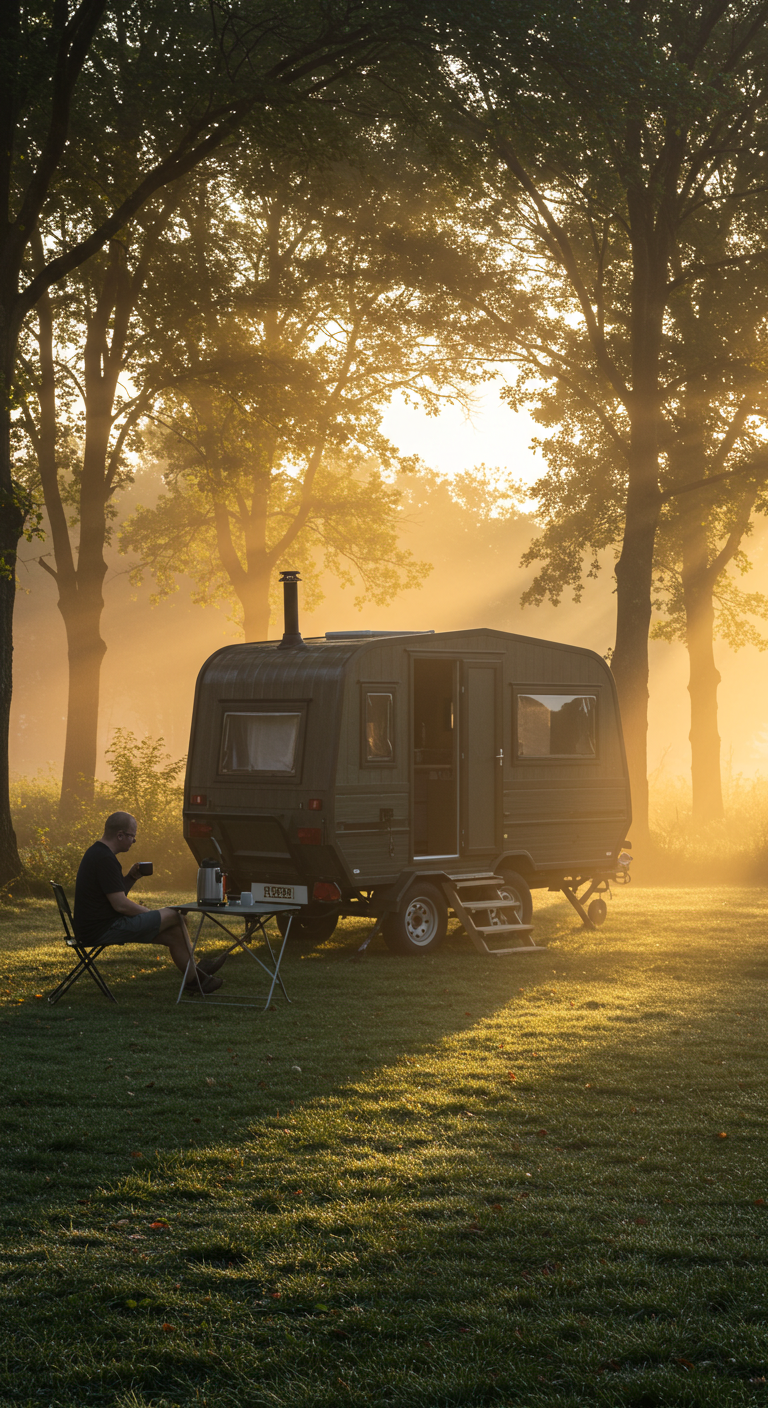
Ensuring a sustainable camping experience begins with effective water and waste management strategies. Installing a portable water tank guarantees a steady supply of clean water for cooking and drinking, essential for any camping trip.
To protect the environment, opting for biodegradable soaps and detergents minimizes your impact on natural water sources, keeping them pristine. Additionally, a simple gray water system can be created using a designated container to manage wastewater effectively, preventing contamination of the surrounding area. Finally, incorporating a composting toilet solution not only reduces waste but also promotes sustainability, making your DIY camping trailer both eco-friendly and functional.
Installing Freshwater Systems Efficiently
Selecting the right water pump is the first step in installing an efficient freshwater system for your camping trailer. It’s essential to position the pump in an area that minimizes noise while optimizing its performance.
Securing and insulating all water lines will prevent leaks and help maintain the temperature of the water, particularly in colder climates. Also, incorporating a filtration system ensures access to clean drinking water and prolongs the life of your plumbing components. Regular maintenance checks for signs of wear or leaks are crucial; this proactive approach guarantees that your freshwater system remains in peak condition, allowing you to enjoy your outdoor adventures without worry.
Waste Disposal Solutions for DIY Trailers

Managing waste effectively is crucial for a successful DIY camping experience. A portable waste tank can be a practical solution, allowing you to easily empty it at designated dump stations along your travels. Additionally, utilizing composting toilets not only reduces water usage but also promotes eco-friendly waste management, making your trailer more sustainable.
Incorporating a greywater system to recycle water from sinks and showers for irrigation or toilet flushing further minimizes waste and conserves resources. Lastly, using biodegradable waste bags for trash disposal ensures that your waste is environmentally friendly and manageable, contributing to a cleaner outdoor environment.
Finishing Touches: Aesthetic Choices and Personalization
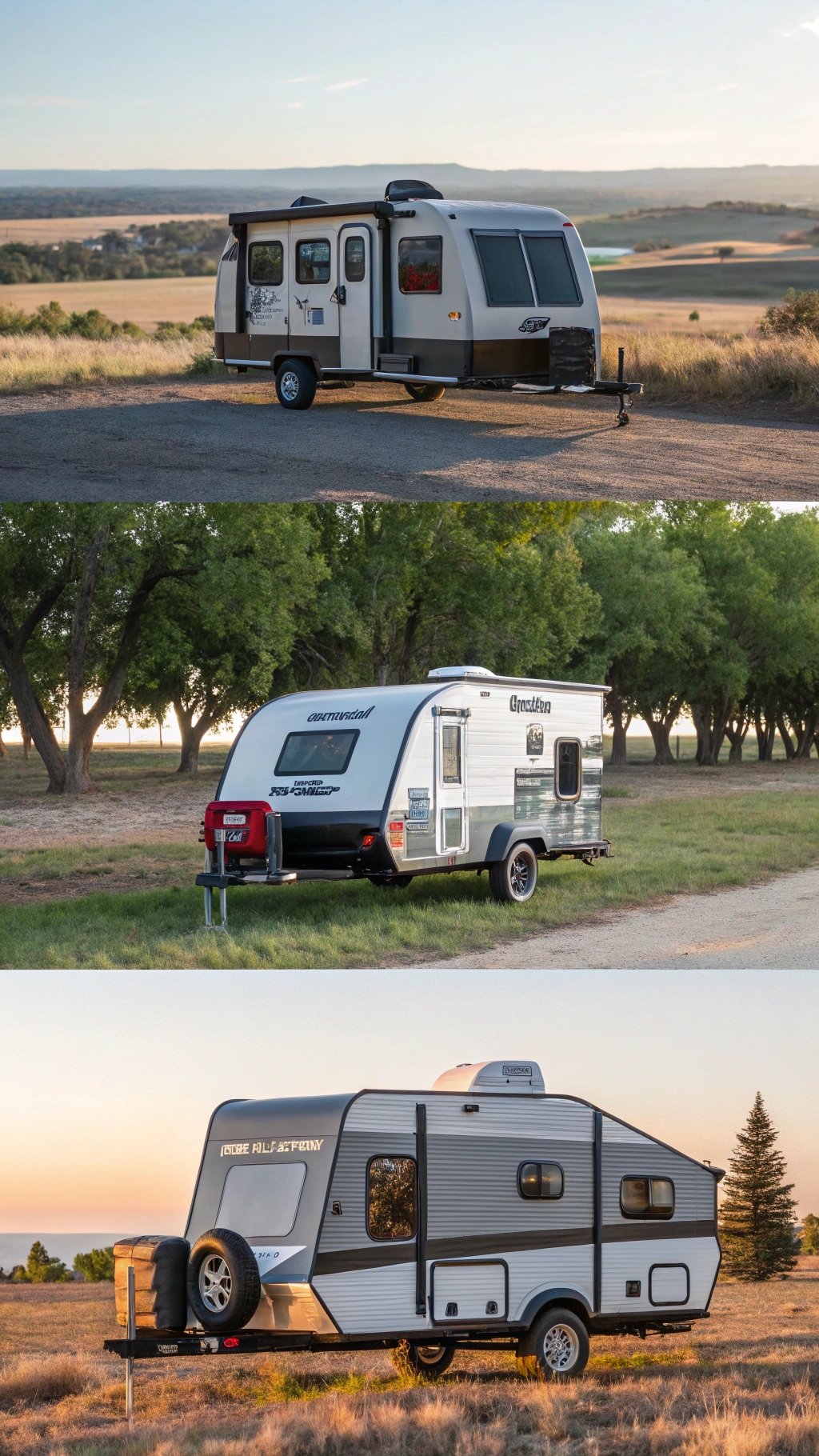
Transforming your camping trailer into a personal sanctuary requires thoughtful aesthetic choices that reflect your unique style. Start by incorporating vibrant paint colors and eye-catching patterns that will make your trailer stand out in any campsite.
Custom-made cushions and bedding not only provide comfort but also allow you to showcase your favorite fabrics and designs, creating a cozy atmosphere. To enhance the overall ambiance, consider adding decorative accessories like fairy lights, wall art, and outdoor rugs, which bring warmth and charm to your outdoor experience. Finally, personalize your storage solutions with labeled bins and stylish containers that keep your essentials organized while adding a touch of flair to your space.
Choosing the Right Interior Decor Style
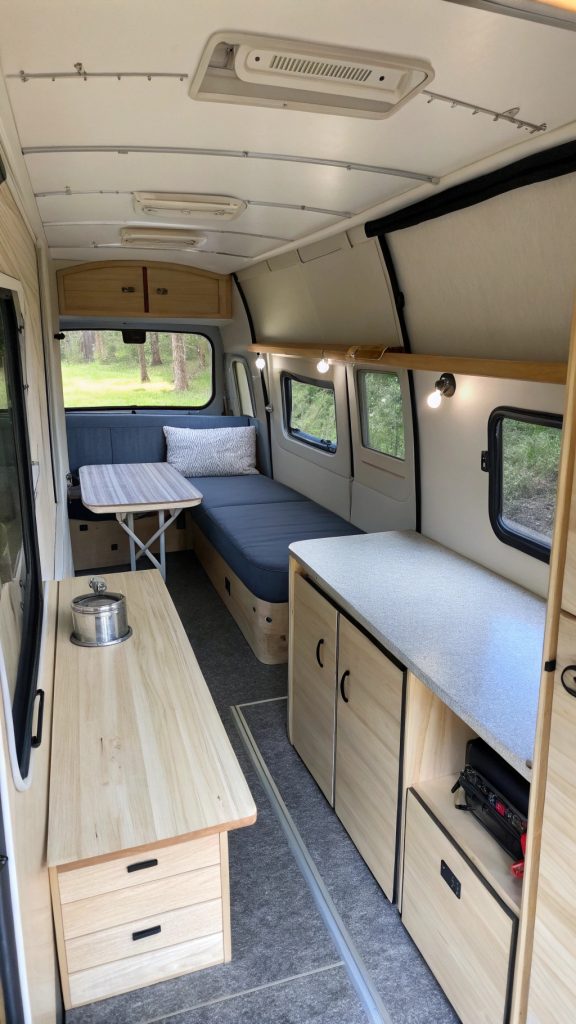
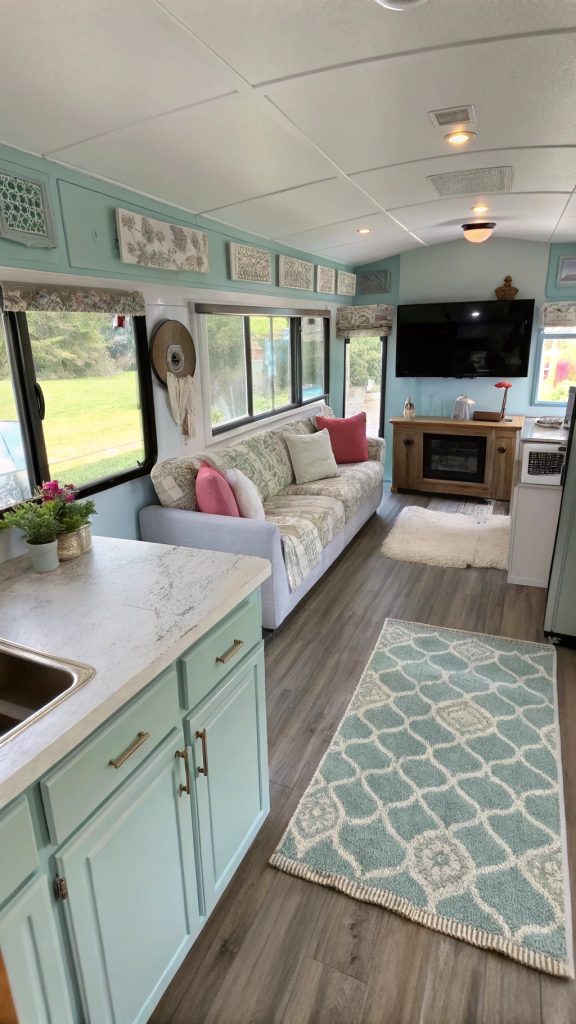
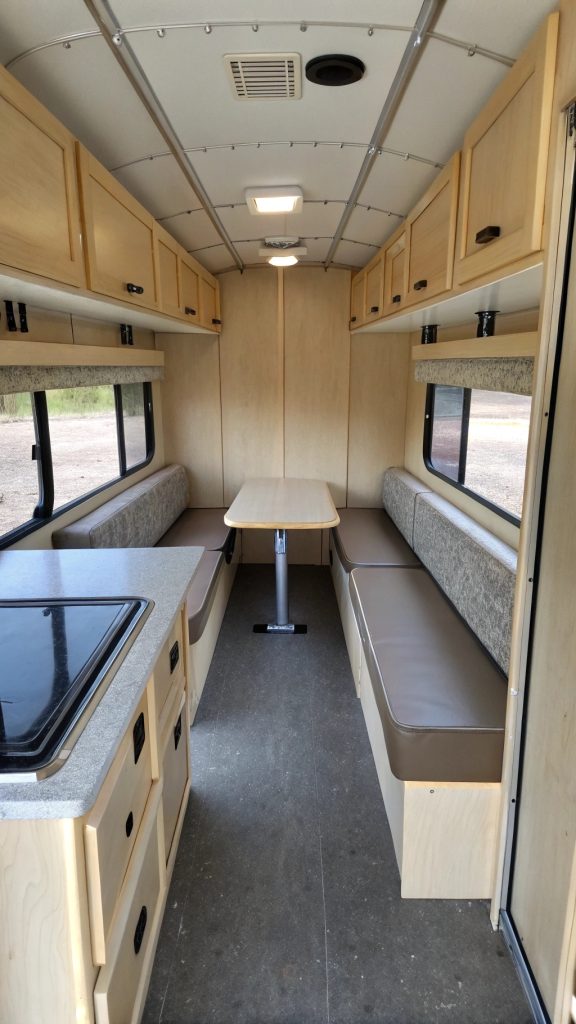
When selecting the interior decor style for your camping trailer, it’s essential to consider your personal aesthetic, as it will guide your choices in colors, patterns, and materials. Opting for functional furniture is crucial; pieces like multi-purpose seating and foldable tables can maximize space while ensuring a cohesive look throughout.
Using natural materials and earthy tones can help you achieve a rustic or bohemian vibe, creating a cozy and inviting atmosphere. Additionally, infuse your space with personal touches, such as artwork or souvenirs from your travels, to ensure that your trailer feels uniquely yours, reflecting the adventures that inspire you.
Customizing Exteriors to Reflect Your Personality
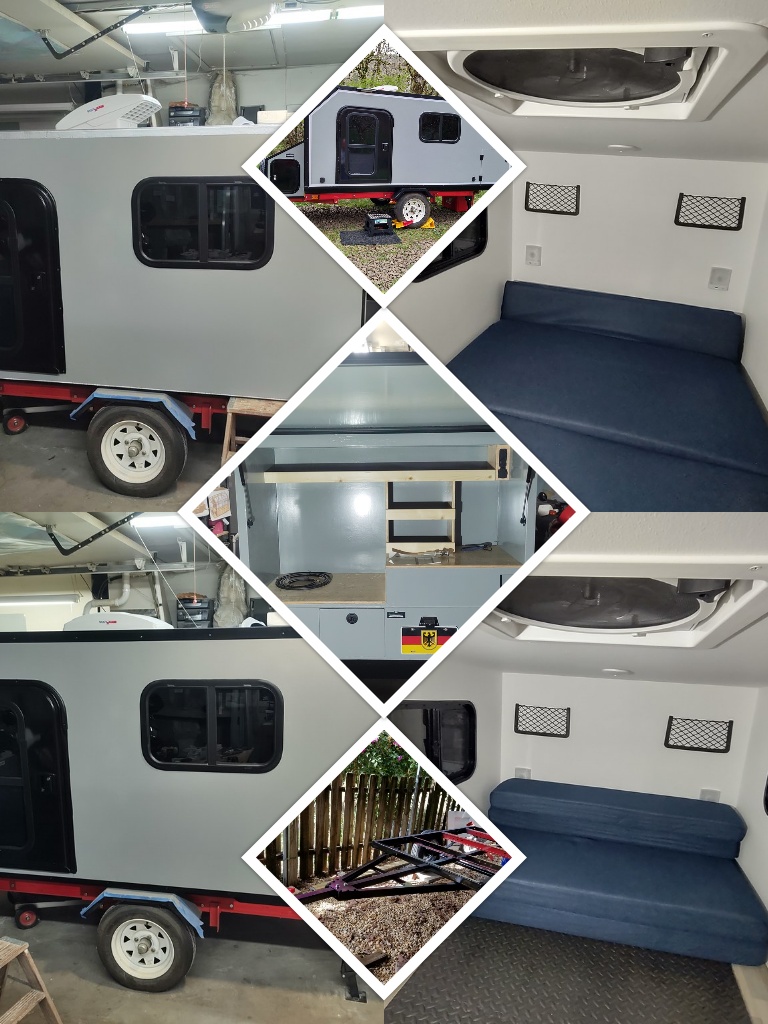
Making your camping trailer a true reflection of your personality starts with vibrant colors and unique patterns that resonate with your style, ensuring it stands out at any campsite. Personalizing the exterior with decals or artwork showcasing your interests—be it outdoor themes or inspiring quotes—adds a unique touch.
At night, consider installing custom lighting features like LED strips or charming lanterns, which create a cozy and inviting atmosphere. Moreover, embracing eco-friendly materials and sustainable practices in your modifications not only enhances your trailer’s appeal but also reflects your commitment to protecting the environment during your adventures.
Safety First: Ensuring a Secure Build
Prioritizing strong structural integrity is fundamental when building your DIY camping trailer; using high-quality materials designed to withstand various outdoor conditions ensures longevity and reliability. Incorporating secure fastening systems helps prevent components from loosening during travel, enhancing overall safety.
Continuing, ensuring proper weight distribution is crucial to avoid sway and improve stability on the road, making for a smoother journey. To further enhance safety, installing safety lights and reflective tape increases visibility, alerting other drivers, especially in low-light situations, and contributing to a safer camping experience.
Important Safety Features to Include
Ensuring a safe camping experience begins with equipping your trailer with vital safety features. A reliable braking system is essential, as it must effectively handle various terrains and loads, providing peace of mind during your travels. Incorporating smoke detectors and carbon monoxide detectors further enhances safety, alerting you to potential hazards while you relax inside.
It is also crucial, to use safety straps and anchors to secure heavy items prevents them from shifting during transit, minimizing the risk of accidents. Adequate lighting, both inside and outside the trailer, improves visibility for nighttime setups and emergencies, ensuring that you can navigate safely even in the dark.
Regular Maintenance Tips for Longevity
Maintaining your DIY camping trailer is essential for ensuring safe and enjoyable adventures. Regularly inspecting the trailer’s tires for proper inflation and tread wear is crucial; this simple step can prevent blowouts and enhance your travels. Additionally, checking and sealing any leaks in the roof and sides helps prevent water damage, safeguarding your insulation and overall integrity.
Don’t forget to clean and lubricate the hitch and brake components; this ensures smooth operation and enhances safety during your journeys. Lastly, performing routine checks on electrical systems, including lights and batteries, will help you avoid unexpected failures, allowing for worry-free trips into the great outdoors.
Testing Your Build: Preparing for the Road
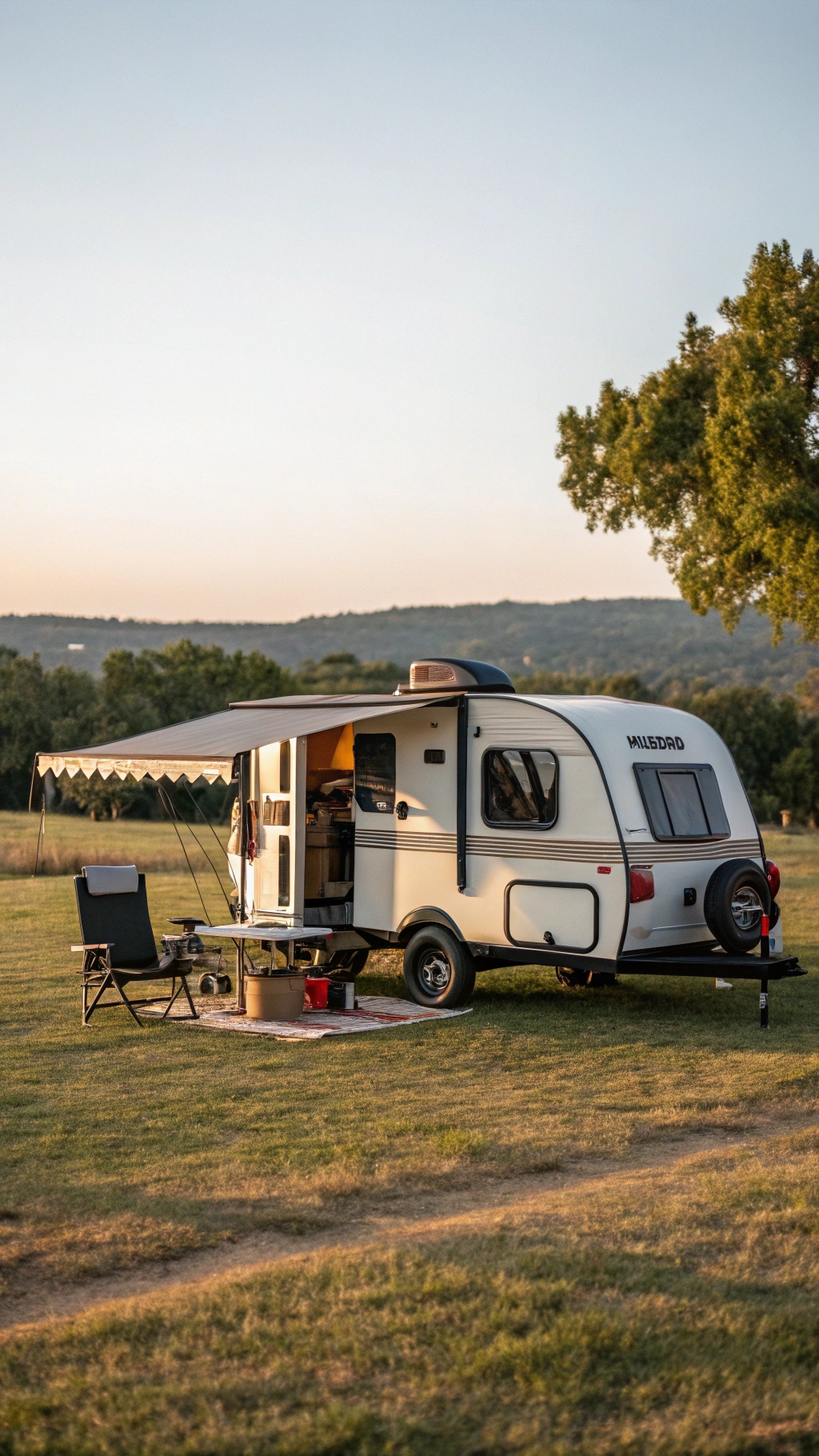
Before hitting the road, a comprehensive check of your camping trailer is crucial for ensuring a safe and enjoyable journey. Start by inspecting all connections and fixtures to confirm they are securely attached, minimizing the risk of failure during travel.
Testing the towing capacity of your vehicle with the loaded trailer will help assess stability and performance, allowing for necessary adjustments. A thorough inspection of the trailer’s brakes, lights, and tires is essential; this step guarantees safety by ensuring all components are functioning properly. Finally, taking your trailer on a short test drive can reveal any potential issues with handling or comfort, enabling you to address them before embarking on a longer adventure.
Initial Testing Procedures Before Departure
Prior to departure, conducting thorough initial testing procedures is essential for a safe and enjoyable camping experience. Start by ensuring that all trailer lights and signals are functioning correctly, as this significantly enhances visibility on the road. Next, checking tire pressure and tread depth can prevent blowouts, contributing to a smoother journey.
Equally important, testing the trailer brakes will confirm they engage smoothly and effectively under load, offering peace of mind while traveling. Finally, inspecting the hitch and connections for security and stability is crucial; this step helps avoid accidents during transit, ensuring you and your gear reach your destination safely.
Troubleshooting Common Issues on the Road
To ensure a smooth and safe journey with your DIY camping trailer, regular maintenance checks are essential. Start by checking tire pressure frequently to prevent blowouts, which can lead to dangerous situations on the road.
Don’t forget the inspection and testing of the electrical systems, including lights and batteries, as failures in these areas can disrupt your trip. Additionally, monitoring the responsiveness of the trailer’s brakes is crucial; make adjustments as necessary to maintain optimal control while towing. Finally, keeping essential tools and spare parts like a jack, wrenches, and fuses on hand will enable you to address minor repairs swiftly, allowing you to stay focused on your adventure.
Final Thoughts
In conclusion, building your dream DIY camping trailer is an exciting journey filled with creativity, practicality, and personal expression. By carefully considering essential elements such as selecting the right base, understanding the pros and cons of different trailer types, and ensuring weight capacity is appropriately managed, you lay the groundwork for a successful project. Designing an efficient layout that maximizes limited space and incorporating necessary features for comfort and utility transform your trailer into a welcoming retreat.
Moreover, selecting durable yet lightweight materials not only enhances your trailer’s performance but also aligns with eco-friendly practices, making your adventures more sustainable. Simplifying electrical systems and implementing effective water and waste management ensures convenience and cleanliness while on the road. Personalizing the aesthetics and prioritizing safety features elevate both the functionality and enjoyment of your trailer.
Regular maintenance and thorough testing before embarking on adventures will keep your trailer in optimal condition, allowing for peace of mind as you explore the great outdoors. With thoughtful planning and a dash of creativity, your DIY camping trailer can become a reflection of your spirit and a reliable companion for countless memorable journeys. So, roll up your sleeves, gather your materials, and start building the camping trailer of your dreams—adventure awaits!

I’ve been involved in the welding industry for over twenty years. I trained in various engineering shops working on various projects from small fabrication and repairs through to industrial projects.I specialize in welding aluminum and food grade stainless steel and an now run an engineering shop fabricating equipment for the food industry.